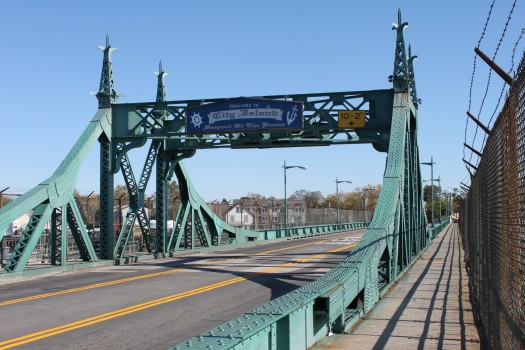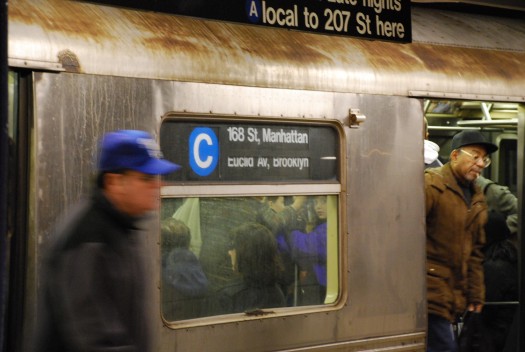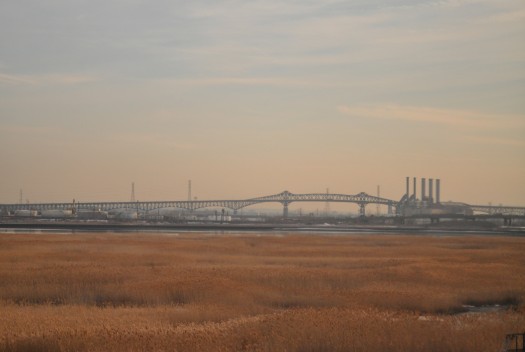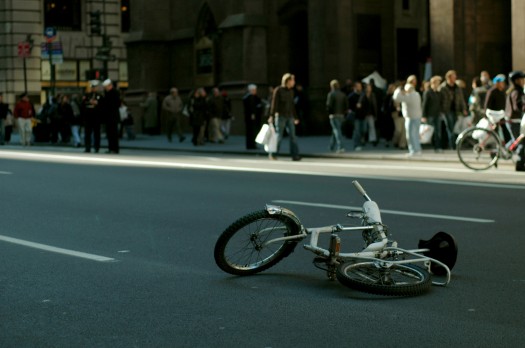
We are celebrating 15 years — and counting — of stories that are deeply researched and deeply felt, that build a historical record of what the city has been.
We are celebrating 15 years — and counting — of stories that are deeply researched and deeply felt, that build a historical record of what the city has been.

City Island Bridge | Image by Flickr user josepha
‘BERG THE BUILDER
The Bloomberg administration and the DOT are taking heat this week for scheduling a new bridge linking City Island to the Bronx before the plan has completed the required public review process, including Uniform Land Use Review (ULURP) and an Environmental Impact Statement (EIS). The new bridge is proving to be unpopular with some City Islanders, who say it is too expensive ($149.5 million up from $32 million in 2003) and complain that its modern design shows a disregard for City Island’s “rustic, nautical character.” Borough President Ruben Diaz Jr., James Vacca (D-East Bronx) and City Comptroller John Liu are calling for the concerns of Island residents to be fully heard by the DOT “before a single shovel hits the ground.” However, a spokesman for DOT said “the review will happen ‘concurrently’ with construction, not beforehand.”

C Train at 42nd Street | Image by Flickr user afagen
Q GETS AN A
The results are in: a little over a week ago the Straphangers Campaign, an advocacy group, announced their annual Subway Report Card. For the fourth year in a row the C train placed last, scoring poorly in “amount of scheduled service, delays caused by mechanical breakdowns, subway car cleanliness and announcements.” As the C train stock is one of the oldest in operation in the world, it’s easy to see how it could lose major points for underperforming on many basic metrics. The Q train took the gold, beating out competitor J and Z lines and the six-time champ 7, due to “frequent in-car announcements, low breakdown rates and clean cars.” Some riders, however, don’t see the winner as so deserving, noting that the Q’s weekend sechdule is often hit-or-miss. The N and R trains, which placed in 11th and 10th respectively, are also facing criticism for unaddressed and ongoing maintenance issues. Read the full report here.
ALLEN’S ALL GROWN UP
NYC cyclists have something to celebrate. After four months of making do without a bike path on Allen Street south of Delancey, Gothamist reports that the new bike lanes and center greenway are almost complete. The Allen Street corridor and its pedestrian malls, cemented directly over the foundations of tenements demolished in 1930, aren’t quite wide enough for the kind of green spaces and ball courts found in Sara D. Roosevelt Park two blocks west on Chrystie. But the long neglected median malls — whose awkward dimensions have inspired some creative interventions in recent years — now accommodate “special lanes for northbound and south bound cyclists, a center lane for pedestrians, trees, benches, bike racks, and recreation areas.” The full bike paths, which run to South Street, should be completed by the end of the month, according to a Parks spokesperson, and additional landscaping will be completed in the fall. You can view the full plan here.
EVENTS AND TO DOs

Meadowlands in New Jersey | Image by flickr user 9brandon
SWAMPED
This Saturday, Studio-X, along with the Nevada Museum of Art’s Center for Art + Environment, will be hosting a presentation led by Matthew Coolidge, director of the Center for Land Use Interpretation, who will take the audience “on a slideshow safari into the industrial swamps of the Meadowlands.” Considered to be one of the largest sections of open space in the New York metro area, the northeast New Jersey area is a vast and sprawling array of urban wetlands, “home to a curious collection of abandoned mega-malls, fragrance and flavoring factories, Superfund sites, endangered bird habitats, radio towers, and the ruins of Penn Station.” The event is free. Saturday, August 11, 2012 7:30pm at Studio-X NYC, 180 Varick Street.
IN THE SHADOW OF OLYMPUS
With all the attention being paid to the London Olympics — for the sport, drama and nationalism on display, as well as the urban and architectural transformations afoot — urbanists are often quick to ask questions about legacy. Which cities lost money? Which cities’ once shining new stadiums are now under-used? Which built new affordable housing? Which re-invested revenues in social services? Lost in some of these conversations is a visual reference of past games’ lasting impact on the landscape of their host cities, from monumental architecture to olympic-themed graffiti. Filmmaker Gary Hustwit, who shared his thoughts on his urbanism 101 documentary Urbanized last summer, has been collaborating with photographer Jon Pack on a series of photographs that document these vestiges. Hustwit and Pack are sharing some of their work to date in an impromptu exhibition at Storefront for At and Architecture through the 18th of this month, complete with a projected livestream of Olympics coverage. (And if that show whets your appetite for more comparative photographic studies of London’s urban landscape in the 150 years leading up to this month’s sporting extravaganza, check out the double-header exhibition at MCNY covering urban life in London and New York from 1860 until now.)
Next week, Hustwit and Park will take part in a panel discussion with Professor Noah Chasin (Professor of Urban Design, Bard College and Columbia University), Grace Tang (Field Operations, Project Manager, London Legacy Queen Elizabeth Olymipic Park) and Ellen Dunham-Jones (Professor of Architecture and Urban Design at Georgia Tech, co-author Retrofitting Suburbia). The event is free but space is limited, so arrive early. August 14, 7pm at Storefront, 97 Kenmare Street.
COMBUSTIBLE CITY
Common Room, a group that bills itself as “an architectural practice, publishing imprint, exhibition space, and collaborative platform,” has a new “guide” to the relationship between fire and cities in the rear lobby of their exhibition space common room 2. Five printed tours illustrate this under-explored relationship at four different spatial scales, each of which highlights “the agency of combustion in shaping the city’s architecture, infrastructure and imaginary.” The tours cover various related topics, such as “the perimeter of the great fire of 1835, exemplary sandstone buildings, the former sites of fire towers in Manhattan, the banality of fire prevention in the everyday, the regional water system, and fire-prevention models at Randall’s Island.” The exhibition, A Guide to Combustible City, is open in the rear lobby of 465 Grand Street during the week, from 9am to 6pm. Hurry in, the show closes August 16th.

Abandoned bike in NYC | Image by Flickr user Dr.DeNo
“MODERN ART”
For the month of August, the Greene Space gallery will be presenting WNYC’s Abandoned Bike Exhibit, originally begun as an open call for radio listeners to send in pictures of broken and busted bikes. “These castoff cycles from around the city — each left to rot, chained to public property — become a captivating catalog of civic nuisance.” Over 500 submissions were received, chronicling “rusted racers, mangled mountain bikes with bent frames and pilfered parts… a collection of the detritus of urban mobility in a busy city.” You can view the full collection online here, or see them projected on the the Greene Space’s windows at 44 Charlton Street, through September 4th.
TOURS WITH SCARY NAMES
On August 25th, urban explorer Mitch Waxman will be leading an Obscura Society tour entitled “The Poison Cauldron of Newtown Creek.” The walk is not for the faint of heart: “We will be exploring the petroleum and waste transfer districts of the Newtown Creek watershed in North Brooklyn. Heavily industrialized, the area we will be walking through is the heart of the Greenpoint Oil Spill and home to scores of waste transfer stations and other heavy industries.” Bring closed-toe shoes, sun protection and a trailblazing sense of adventure. More information about the meeting location can be found here.
HIP FOR ZIP
Ziplines and Coney Island seem to be an easy match, and this week such speculation turned to reality as the Michigan-based zip line company, Category 5 Productions, began installing one of its 300-foot long rides on Stillwell Avenue. After long delays caused by New York City’s demanding regulations, especially those of the Departments of Transportation and Buildings, company owner Patrick Ingram expressed relief: ‘That song ‘New York, New York’ kept going through my head every other day… If you can make it here you can make it anywhere!’
The Roundup keeps you up to date with topics we’ve featured and other things we think are worth knowing about.
The views expressed here are those of the authors only and do not reflect the position of The Architectural League of New York.